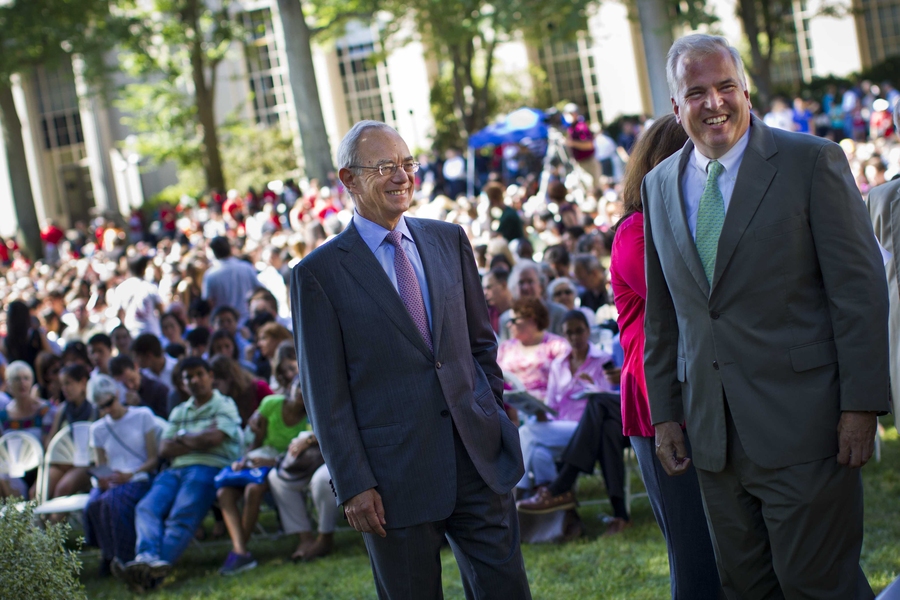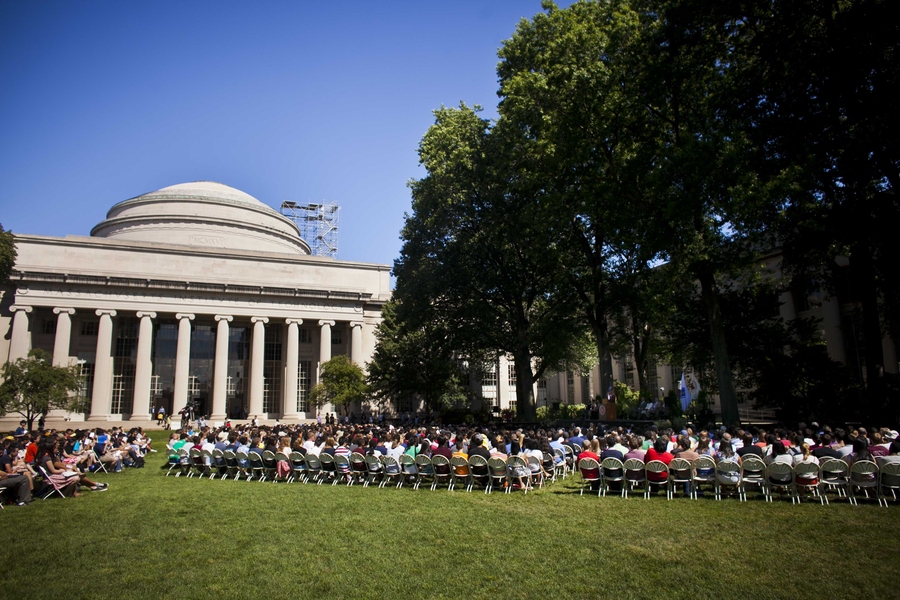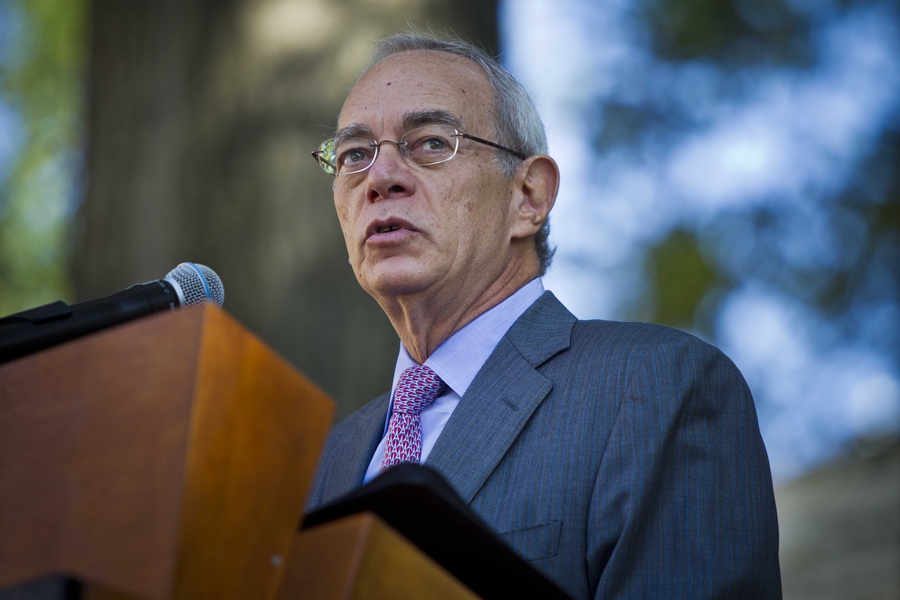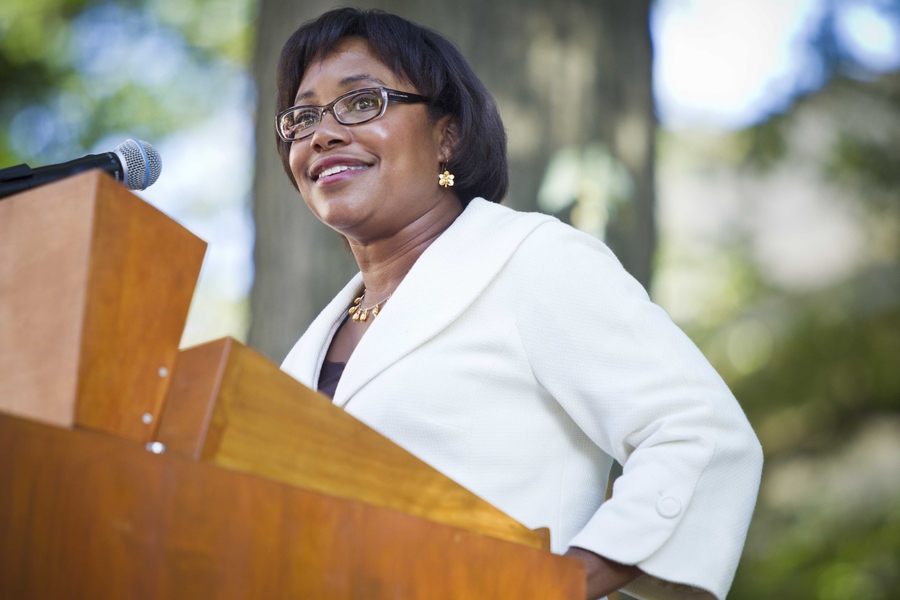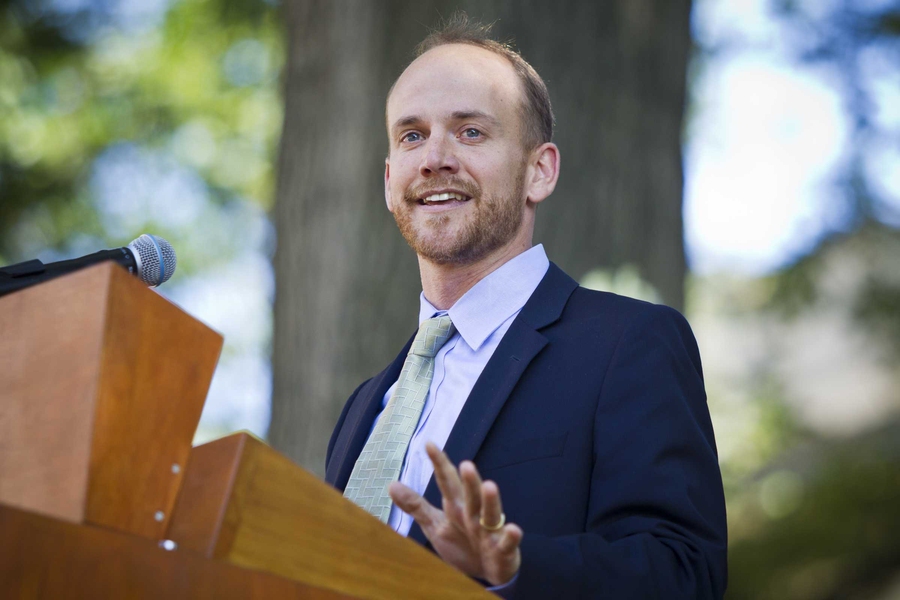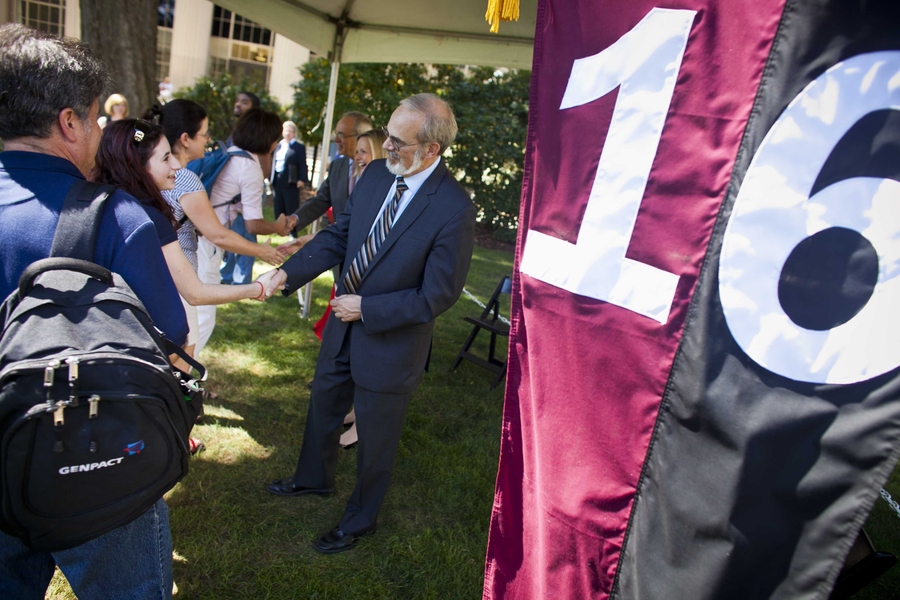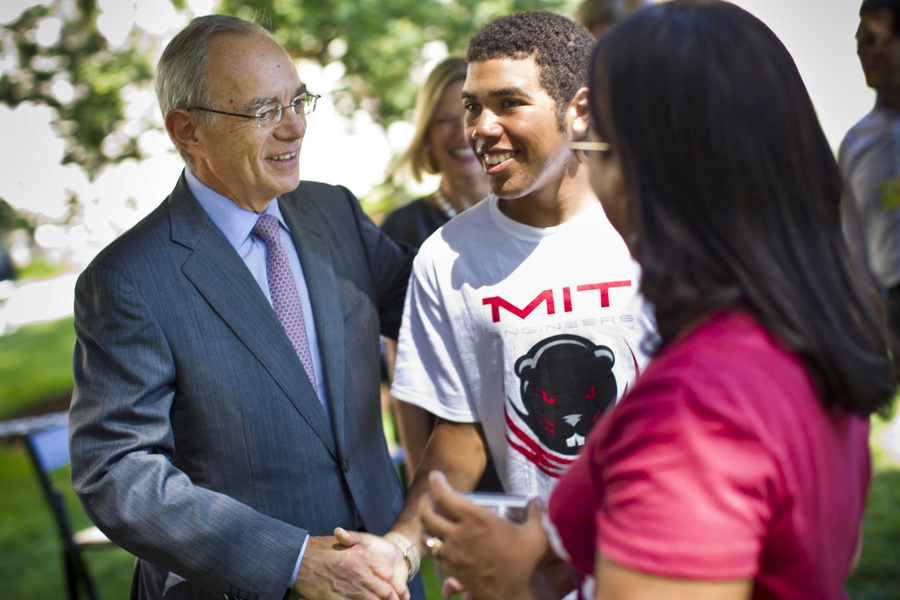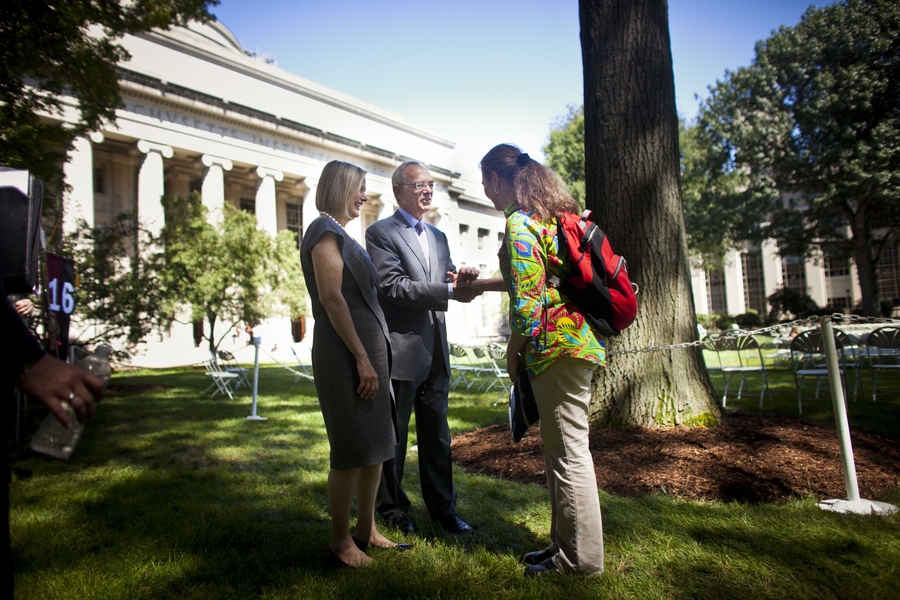Leading his first Freshman Convocation, President L. Rafael Reif welcomed MIT’s incoming Class of 2016 in Killian Court on Monday under a blazing sun and clear blue skies. “For those of you who haven’t been in Boston or Cambridge,” he joked, “every day feels like this.”
“I feel a very special connection to this class,” the Institute’s new president said. “This is my freshman year, too.”
But while it’s his first year leading the Institute, Reif pointed out that he has actually been at MIT “since before many of you were born.” When he first arrived at MIT in 1980, he said, he was excited but had many of the same worries that this year’s new arrivals are likely feeling: “Would my work be good enough? Would my English be good enough? Would I fit in? What would I do when it started to snow?”
But very soon, he said, “I came to feel that MIT was my home, and that this community was like an extended family. I hope that you will soon come to have this feeling, too.”
Making a difference
The world needs students with an MIT education, he said: “In coming to MIT, you are joining a community that is not satisfied with just learning what is needed to get a degree, but who feel a need to do what it takes to make a big difference and have a positive impact on the world.”
Following Reif, Larry Anderson, the head coach of MIT’s men’s basketball team — which last winter made it into the NCAA’s Final Four for the first time in the Institute’s history — told the incoming students that they are now part of group of people who always want to do “a little more than what we are assigned to do.”
On that last point, Anderson pointed out that last year’s men’s basketball team came within one game of winning a national championship. “I assure you you’re going to miss some shots,” he said. “You’re not going to make them all, but that’s OK.” The key thing, Anderson said, is to “keep it all in balance.”
Paula Hammond ‘84, PhD ‘93, the David A. Koch Professor in the Department of Chemical Engineering, talked about her own MIT experiences as an undergraduate, a graduate student and a faculty member. She pointed out that she, too, shared a freshman year with an incoming MIT president: Paul Gray, who served as MIT president from 1980 to 1990.
Something bigger than us
Hammond told the new students that as members of this community, “We all believe in something that is bigger than us as individuals,” and seek to accomplish “something that is useful, practical, lifesaving or beautiful.” MIT is a place, she said, “where excitement is more important than prestige or decorum,” and where “you’re always surrounded by excellence in every field. … I haven’t found anyplace that so vigorously engages its faculty and students with a high level of energy and a sense of commitment and community.”
Hammond urged students not to compare themselves to other people, but always to “use yourself as your own measuring stick, and always try to become better.”
John Ochsendorf, an associate professor in the School of Architecture and Planning, recalled growing up in a small house in rural West Virginia, with no television or telephone. “All of us who are here today came by our own path,” he said. “I love the diversity here — the people around you come from every area of life.”
Ochsendorf added that many problems facing the world today transcend the boundaries of traditional disciplines and departments, so students should not feel the need to make choices too soon. Having worked in five different universities in four countries, he said, “This is the single best university I’ve found for crossing boundaries.”
“I feel a very special connection to this class,” the Institute’s new president said. “This is my freshman year, too.”
But while it’s his first year leading the Institute, Reif pointed out that he has actually been at MIT “since before many of you were born.” When he first arrived at MIT in 1980, he said, he was excited but had many of the same worries that this year’s new arrivals are likely feeling: “Would my work be good enough? Would my English be good enough? Would I fit in? What would I do when it started to snow?”
But very soon, he said, “I came to feel that MIT was my home, and that this community was like an extended family. I hope that you will soon come to have this feeling, too.”
Making a difference
The world needs students with an MIT education, he said: “In coming to MIT, you are joining a community that is not satisfied with just learning what is needed to get a degree, but who feel a need to do what it takes to make a big difference and have a positive impact on the world.”
Following Reif, Larry Anderson, the head coach of MIT’s men’s basketball team — which last winter made it into the NCAA’s Final Four for the first time in the Institute’s history — told the incoming students that they are now part of group of people who always want to do “a little more than what we are assigned to do.”
- Video: Watch Freshman Convocation
On that last point, Anderson pointed out that last year’s men’s basketball team came within one game of winning a national championship. “I assure you you’re going to miss some shots,” he said. “You’re not going to make them all, but that’s OK.” The key thing, Anderson said, is to “keep it all in balance.”
Paula Hammond ‘84, PhD ‘93, the David A. Koch Professor in the Department of Chemical Engineering, talked about her own MIT experiences as an undergraduate, a graduate student and a faculty member. She pointed out that she, too, shared a freshman year with an incoming MIT president: Paul Gray, who served as MIT president from 1980 to 1990.
Something bigger than us
Hammond told the new students that as members of this community, “We all believe in something that is bigger than us as individuals,” and seek to accomplish “something that is useful, practical, lifesaving or beautiful.” MIT is a place, she said, “where excitement is more important than prestige or decorum,” and where “you’re always surrounded by excellence in every field. … I haven’t found anyplace that so vigorously engages its faculty and students with a high level of energy and a sense of commitment and community.”
Hammond urged students not to compare themselves to other people, but always to “use yourself as your own measuring stick, and always try to become better.”
John Ochsendorf, an associate professor in the School of Architecture and Planning, recalled growing up in a small house in rural West Virginia, with no television or telephone. “All of us who are here today came by our own path,” he said. “I love the diversity here — the people around you come from every area of life.”
Ochsendorf added that many problems facing the world today transcend the boundaries of traditional disciplines and departments, so students should not feel the need to make choices too soon. Having worked in five different universities in four countries, he said, “This is the single best university I’ve found for crossing boundaries.”
